Directions (1-15): In the following questions two columns are given containing three sentences/phrases each. In first column, sentences/phrases are A, B and C and in the second column the sentences/phrases are D, E and F. A sentence/phrase from the first column may or may not connect with another sentence/phrase from the second column to make a grammatically and contextually correct sentence. Each question has five options, four of which display the sequence(s) in which the sentences/phrases can be joined to form a grammatically and contextually correct sentence. If none of the options given forms a correct sentence after combination or none of them connects, mark (e), i.e. “None of the above” as your answer.
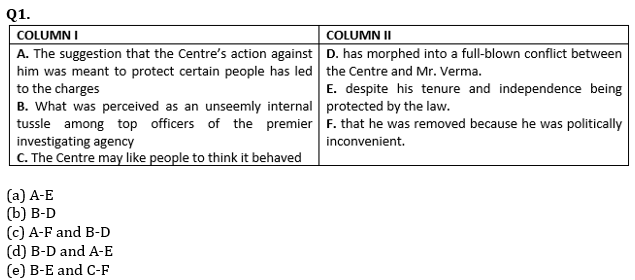
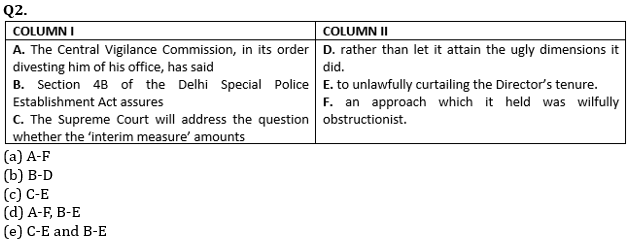
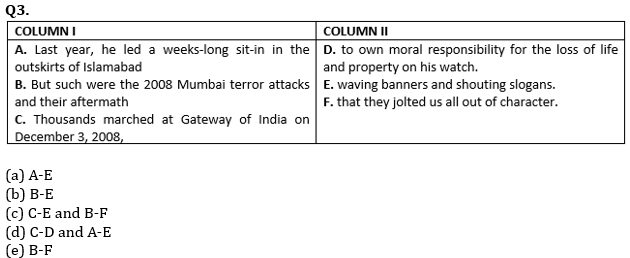
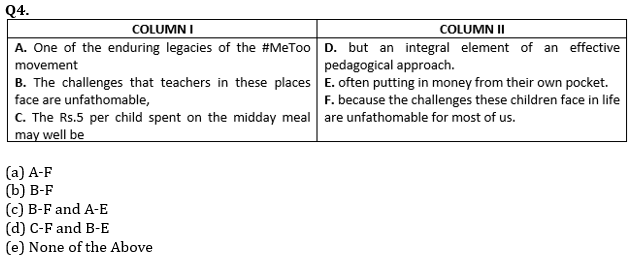
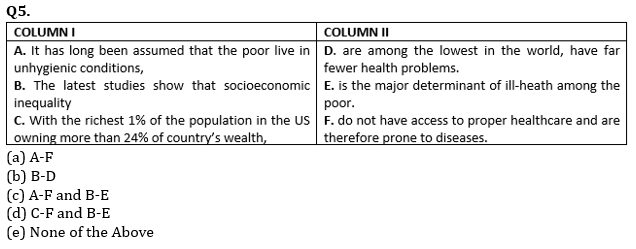
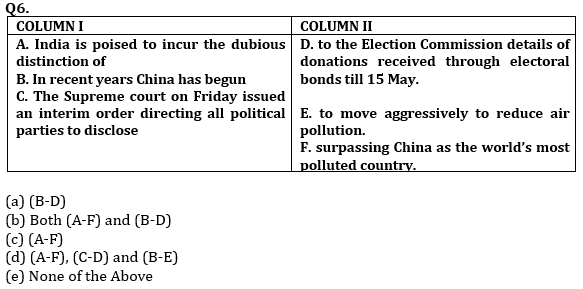
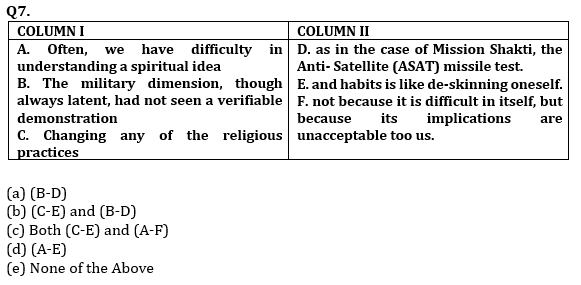
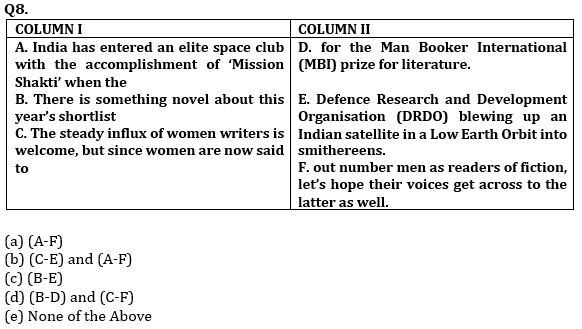
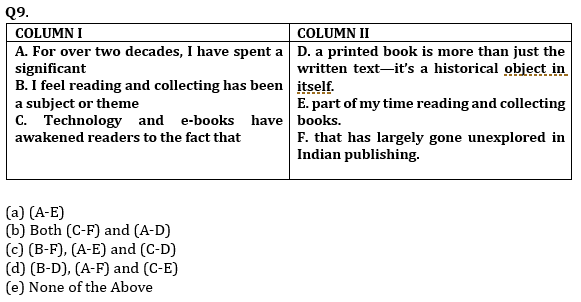
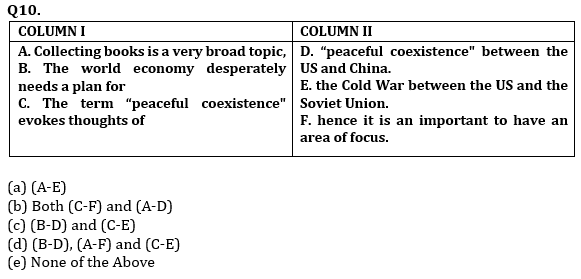
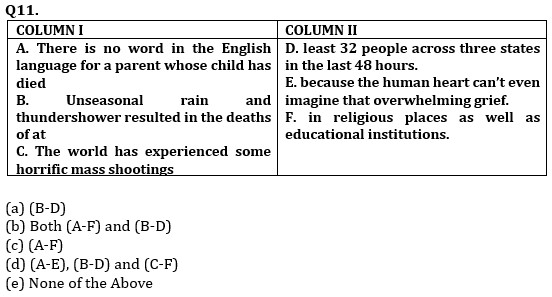
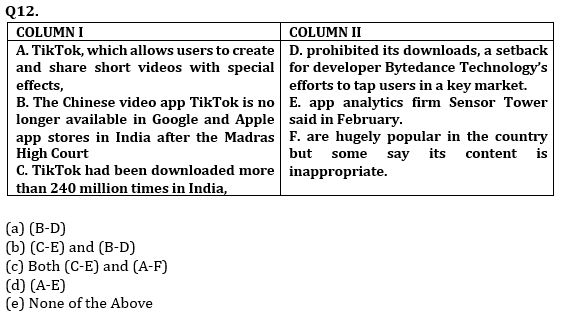
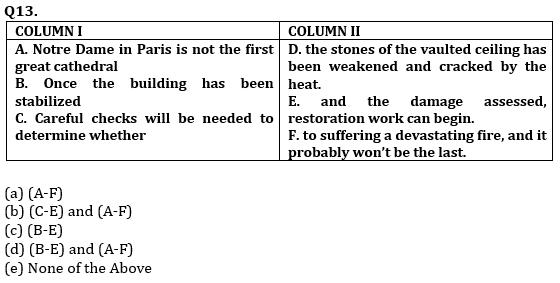
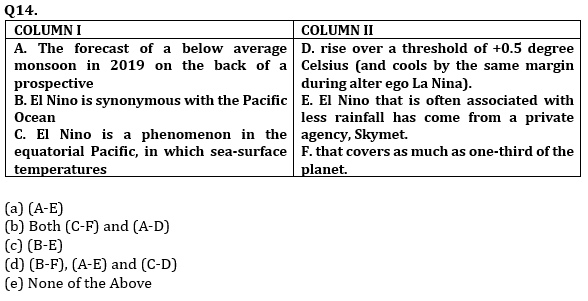
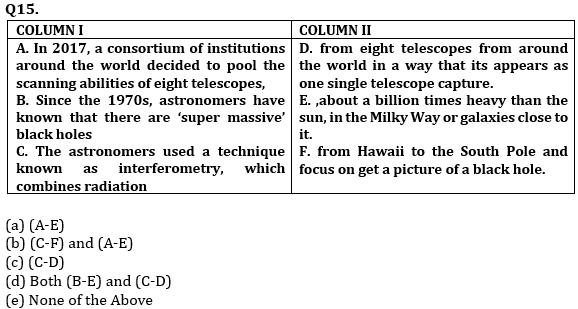
Solutions
S1. Ans.(c)
Sol. Both A-F and B-D make correct sentences.
The suggestion that the Centre’s action against him was meant to protect certain people has led to the charges that he was removed because he was politically inconvenient.
What was perceived as an unseemly internal tussle among top officers of the premier investigating agency has morphed into a full-blown conflict between the Centre and Mr. Verma.
S2. Ans.(c)
Sol. Only C-E makes a contextually correct and meaningful sentence here. “The Supreme Court will address the question whether the ‘interim measure’ amounts to unlawfully curtailing the Director’s tenure.”
S3. Ans.(c)
Sol. Both C-E and B-F make correct sentences.
“Thousands marched at Gateway of India on December 3, 2008, waving banners and shouting slogans.”
“But such were the 2008 Mumbai terror attacks and their aftermath that they jolted us all out of character.”
S4. Ans.(b)
Sol. B-F makes a grammatically and contextually correct sentence here. “The challenges that teachers in these places face are unfathomable, because the challenges these children face in life are unfathomable for most of us.”
S5. Ans.(c)
Sol. Both A-F and B-E make contextually correct and meaningful sentences.
“It has long been assumed that the poor live in unhygienic conditions,do not have access to proper healthcare and are therefore prone to diseases.”
“The latest studies show that socioeconomic inequality is the major determinant of ill-heath among the poor.”
S6. Ans.(d)
Sol. (A-F), (C-D) and (B-E) make meaningful and correct sentences.
S7. Ans.(b)
Sol. Both (C-E) and (B-D) make meaningful and correct sentences. In A-F, use ‘to’ and not ‘too’.
S8. Ans.(d)
Sol. Both (B-D) and (C-F) make meaningful and correct sentences. In A-E ‘Blew’ will be used in place of ‘blewing’ as the sentence is in past tense.
S9. Ans.(c)
Sol. (B-F), (A-E) and (C-D) make meaningful and correct sentences.
S10. Ans.(c)
Sol. (B-D) and (C-E) make meaningful and correct sentences. In A-F, remove “an” before “important” to make it grammatically correct and meaningful.
S11. Ans.(d)
Sol. (A-E), (B-D) and (C-F) make grammatically correct and meaningful sentences.
S12. Ans.(b)
Sol. Both (C-E) and (B-D) make grammatically correct and meaningful sentences. In A-F, ‘is’ should be used in place of ‘are’ as the subject ‘TikTok’ is singular.
S13. Ans.(c)
Sol. (B-E) makes grammatically correct and meaningful sentences. In A-F, ‘To’ should be followed by first form of verb and ‘suffer’ must be used. In, C-D, ‘have been’ must be used and not ‘has been’ because ‘stones’ is plural.
S14. Ans.(d)
Sol. All (B-F), (A-E) and (C-D) make grammatically correct and meaningful sentences.
S15. Ans.(e)
Sol. None makes correct sentences.
In A-F, ‘getting’ must be used after ‘get’.
In B-E, ‘Heavier’ must be used for comparison and not ‘heavy’.
In C-D, use ‘it’ and not ‘its’ before ‘appears’.



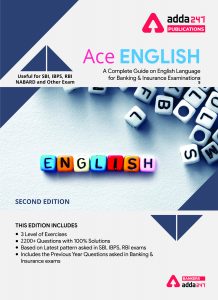

 English Language Quiz For Bank Foundatio...
English Language Quiz For Bank Foundatio...
 English Language Quiz For Bank Mains Exa...
English Language Quiz For Bank Mains Exa...







